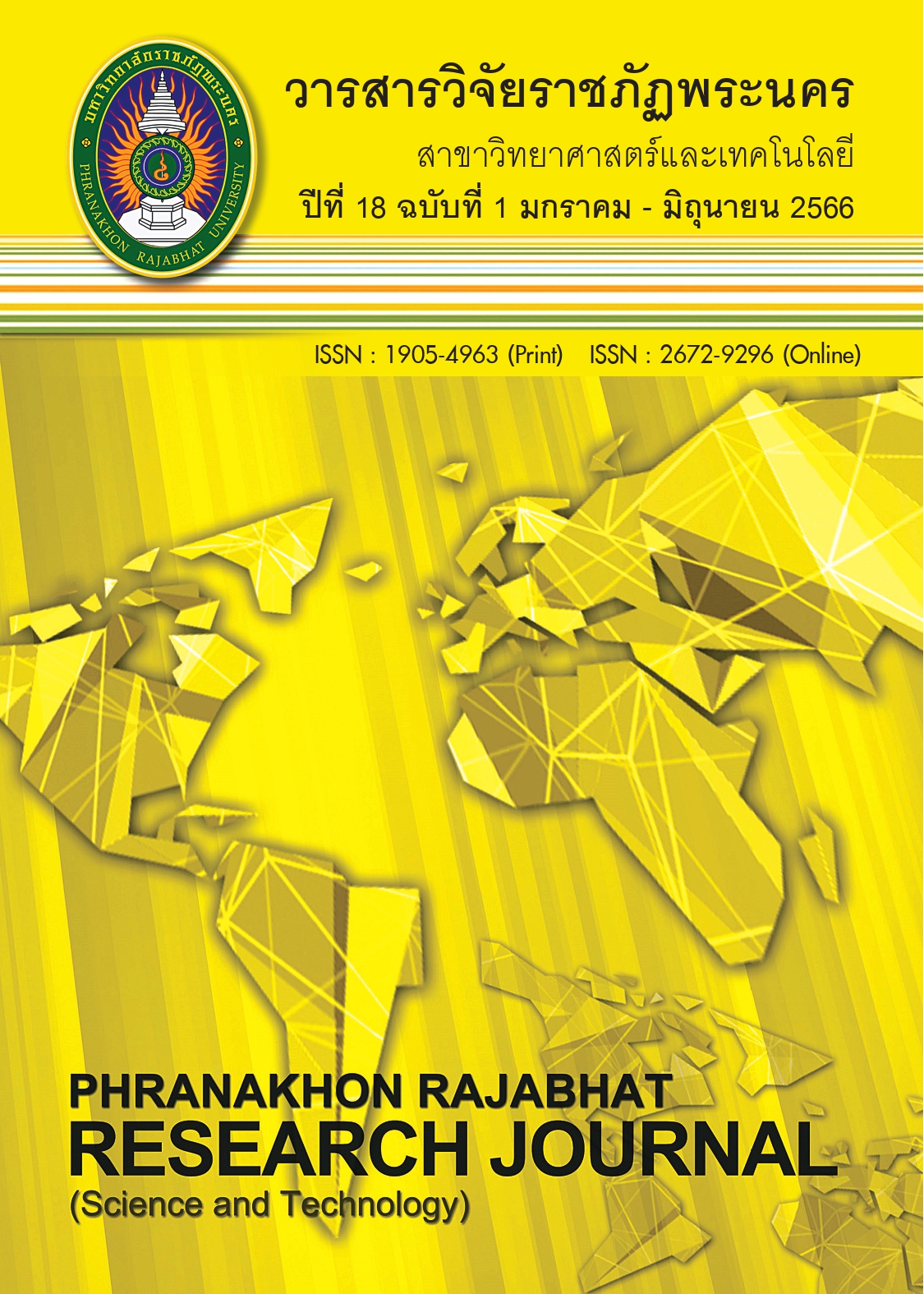A SURVEY OF LIGHTING CONDITION AND THAI PEDESTRIANS’ PERCEPTION OF SAFETY FROM CRIME: A CASE STUDY OF PHRA NAKHON AREA
Keywords:
Lighting, Safety from crime, Pedestrian, Pra Nakhon District AreaAbstract
Lighting is one of the factors affecting feeling safe from crime in area. The objective of the study is to investigate the problem of lighting and perceived safety in Phra Nakhon District. The reason is because this area is one of the 50 administrative districts of Bangkok Which is important as a reservation area. The study investigated in a road in front of Phra Sumen Fort continues along Phra Athit Road on a 2-meter-wide sidewalk, which is a total distance of 150 meters. There are two component s in this study, which are 1) illuminance survey and 2) questionnaire survey. Questionnaire survey is related to lighting problem and feeling safe from crime on walkway which were obtained from 35 people. Results of this study suggested that at present does not achieve the standards. Most of the people required lighting to be brighter And they need improve lighting for better remembering characteristics of people.
References
Atkins, S., Husain, S., & Storey, A. (1991). The influence of street lighting on crime and fear of crime (Crime prevention unit paper 28). London: Home Office
Boyce, P. R., Eklund, N. H., Hamilton, B. J., & Bruno, L. D. (2000). Perceptions of safety at night in different lighting conditions. Lighting Research and Technology, 32(2), 79–91.
Day, K., Anderson, C., Powe, M., McMillan, T., & Winn, D. (2007). Remaking Minnie Street: The Impacts of Urban Revitalization on Crime and Pedestrian Safety. Journal of Planning Education and Research, 26(3), 315-331
Fujiyama, T., Childs, C., Boampong, D., & Tyler, N. (2005). Investigation of Lighting Levels for Pedestrians. Paper presented at the Walk21 Conference Everyday Walking Culture – Walk21-VI, Zurich. Retrieved from https://discovery.ucl.ac.uk/id/eprint/1430/1/Walk21 Fujiyama.pdf
IESNA. (2003). Guideline for Security Lighting for People, Property, and Public Spaces. In Security Lighting Committee. Retrieved from https://webstore.ansi.org/standards/iesna/iesna03
IESNA. (2016). Guide for Security Lighting for People, Property, and Critical Infrastructure. United States of America: IESNA
Haans, A., & Kort, Y. (2012). Light distribution in dynamic street lighting: two experimental studies on its effects on perceived safety, prospect, concealment, and escape Netherlands: Eindhoven University of Technology. Journal of Environmental Psychology, 32, 342-35
Lega tool. (2016). Konica Minolta T-10A Illuminance Meter. Retrieved from https:// legatool.com/th/konica-minolta-t-10a-illuminance-meter [2021, 14 Oct.]
Mekcharoen, N., & Ladavichitkul, P. (2012). Approximation of Anthropometric Data from Basic Factor for Workstation Design of Teens. In Industrial Engineering Network Academic Conference (457–463). Cha Am, Phetchaburi.
Miller, L. K., Rowe, P. J., & Lund, J. (1992). Correlation of Eye Color on Self-Paced and Reactive Motor Performance. Sage journals, 75(1), 91-95.
Office of Justice Affairs. (2017). Crime Situation and Justice Report 2018. Bangkok, Thailand: Office of Justice Affairs.
Office of Justice Affairs Ministry of Justice. (2009). Crime statistics report in the public sector nationwide, 2007. Bangkok, Thailand: Office of Justice Affairs.
Painter, K. (1988). Lighting and Crime Prevention: the Edmonton Project, Hatfield, UK: Middlesex Polytechnic.
Painter, K. (1989). Street lighting, crime and fear for crime: A summary of research, Warsaw: CIE.
Painter, K., & Farrington, D. P. (1995). The Crime Reducing Effect of Improved Street Lighting: The Dudley Project. In R. V. Clarke (Ed.), Situational Crime Prevention-Successful Case Studies, 2nd Edition (209-266). Harrow and Heston, Guilderland.
Research and Development Division National Police Agency. (2007). Handbook of Crime Prevention Through Environmental Design. Retrieved from https://readgur.com/ doc/2303853/crime-prevention-through-environmental-design--cpted- [2021, 14 Oct.]
Sakipa, S. R. M., Johari, N., & Salleh, M. N. M. (2012). The Relationship between Crime Prevention through Environmental Design and Fear of Crime. Social and Behavioral Sciences, 68, 628-636.
Welsh, B. P., & Farrington, D. C. (2008). Effects of Improved Street Lighting on Crime. Campbell Systematic Reviews, 3, 1-51.
Downloads
Published
Issue
Section
License

This work is licensed under a Creative Commons Attribution-NonCommercial-NoDerivatives 4.0 International License.
โปรดกรอกเอกสารและลงนาม "หนังสือรับรองให้ตีพิมพ์บทความในวารสารวิจัยมหาวิทยาลัยราชภัฏพระนคร สาขาวิทยาศาสตร์และเทคโนโลยี" ก่อนการตีพิมพ์




